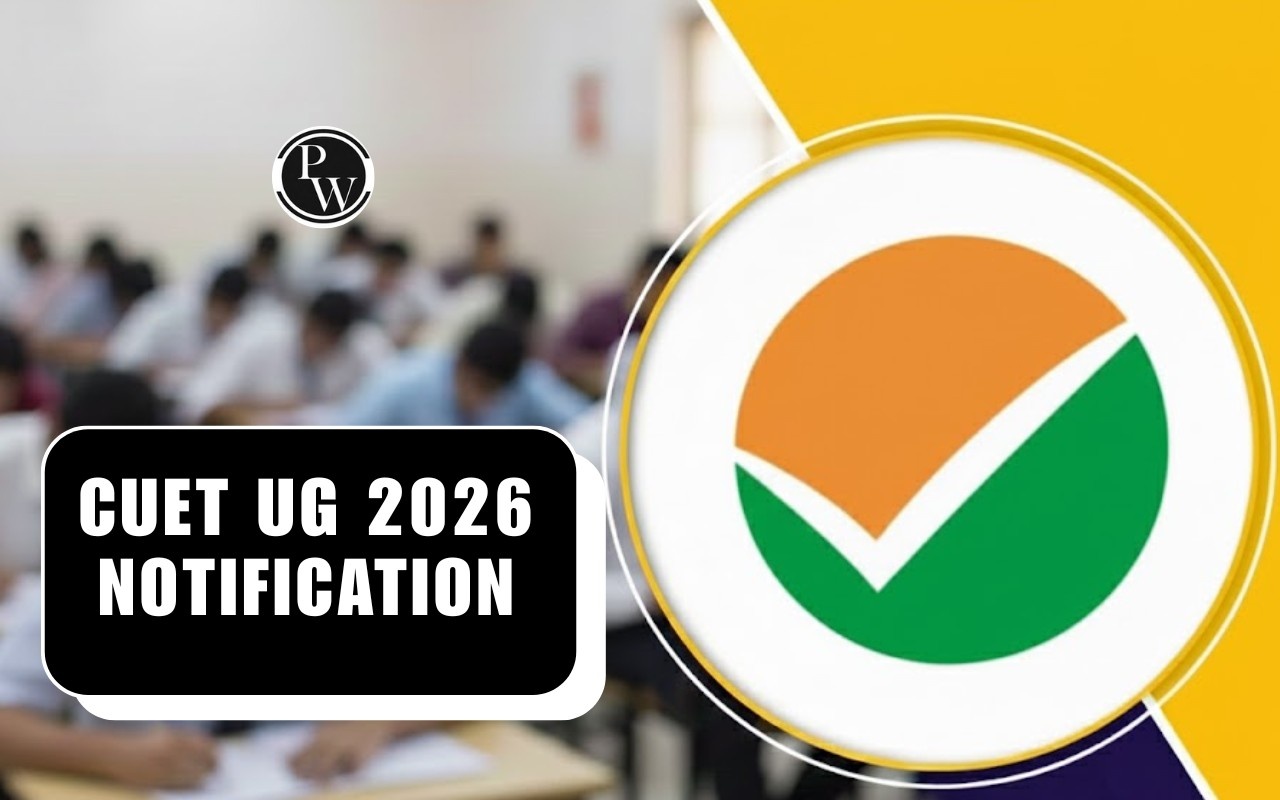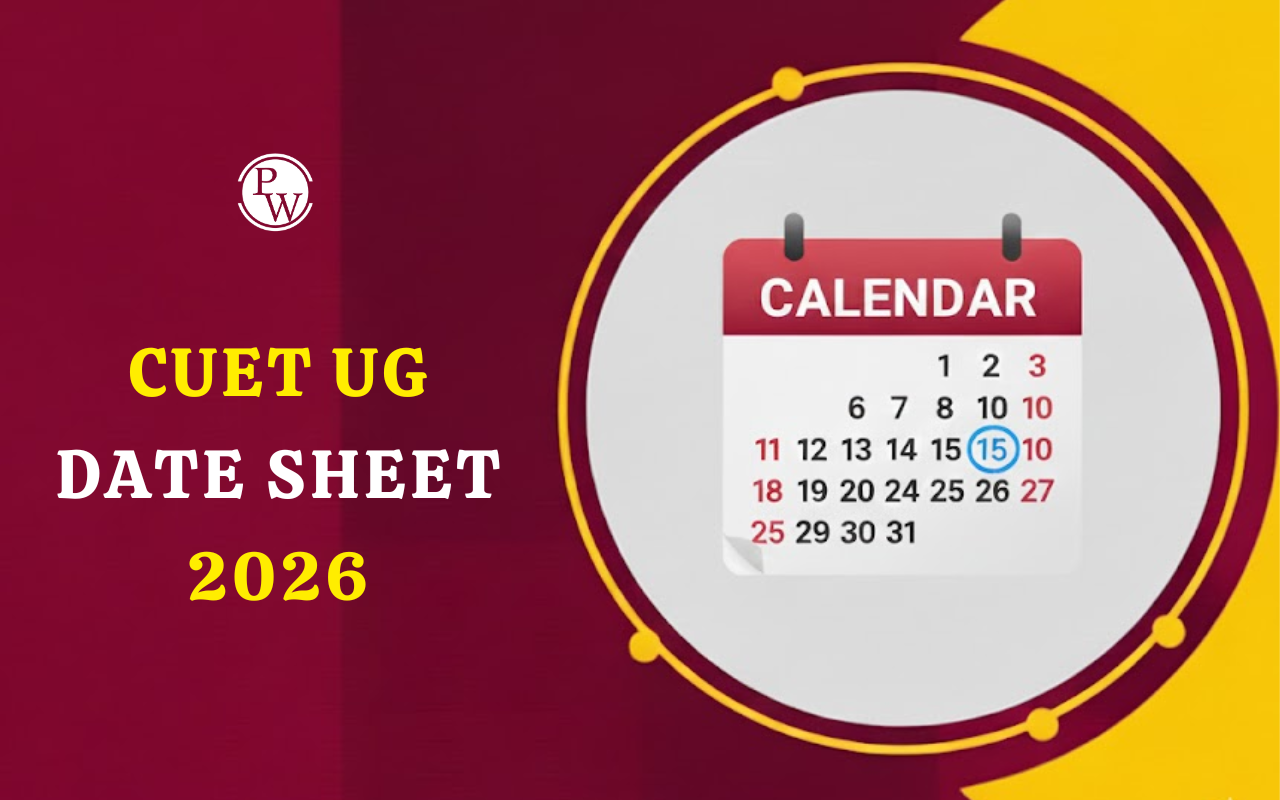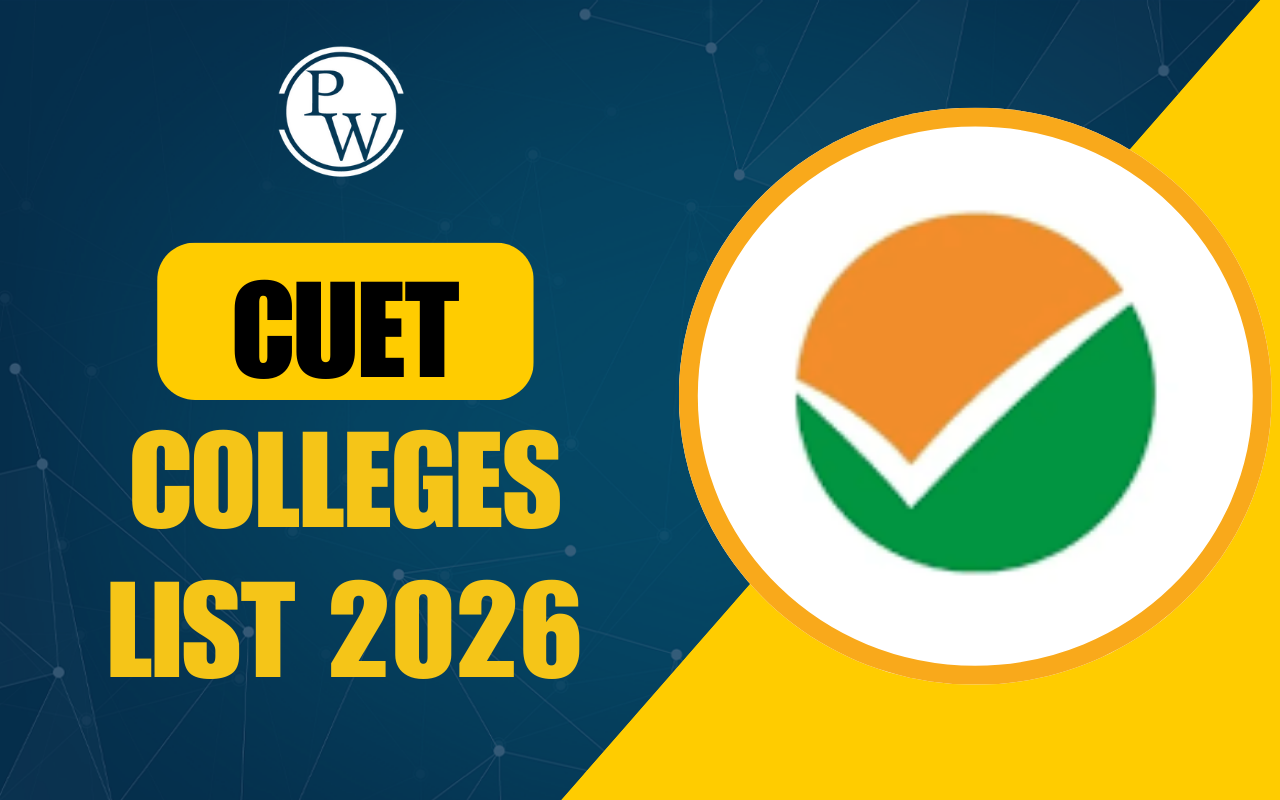
CUET Syllabus 2026 for Commerce students is important for those aspiring to pursue undergraduate courses like B.Com, B.Com (Hons.), BMS, BFM, BBA and related programs. Commerce students must check the syllabus while selecting subjects in the CUET application form, as it helps in planning preparation effectively and focusing on high-weightage topics. NTA will soon release the CUET Syllabus online.
Following the CUET syllabus 2026 ensures students are well-prepared to tackle the entrance examination and secure admission to top central, state, private or deemed universities.
CUET Syllabus 2026 for Commerce Students Overview
The CUET UG 2026 syllabus for Commerce students covers all essential subjects required for admission to undergraduate commerce courses. The table below provides an overview of the core subjects, important topics, exam duration, and number of questions.
|
CUET Syllabus 2026 for Commerce Students Overview |
|||
|
Subject |
Important Topics / Focus Areas |
Duration |
No. of Questions |
|
Accountancy |
Not-for-Profit Organizations, Partnership Accounts (Reconstitution & Dissolution), Shares & Debenture Accounting, Financial Statement Analysis, Statement of Changes in Financial Position |
60 min |
50 |
|
Business Studies |
Business Environment, Planning, Organising, Staffing, Directing, Controlling, Business Finance, Marketing |
60 min |
50 |
|
Economics |
Microeconomics Introduction, Consumer Behaviour & Demand, National Income, Determination of Income & Employment, Money & Banking, Government Budget, Development Experience of India |
60 min |
50 |
|
Mathematics |
Algebra, Calculus, Integration, Differential Equations, Probability, Linear Programming |
60 min |
50 |
|
English |
Reading Comprehension (Factual, Narrative, Literary), Grammar, Vocabulary, Synonyms & Antonyms, Sentence Rearrangement |
60 min |
50 |
|
General Test |
Numerical Ability, Logical & Analytical Reasoning, General Awareness |
60 min |
50 |
|
Computer Science |
Programming Concepts, Computer Science Fundamentals, Informatics Practices |
60 min |
50 |
Is General Test Compulsory for CUET 2026
CUET Commerce Syllabus
CUET syllabus for commerce students is designed to test knowledge and skills in key commerce subjects and general aptitude. It covers Accountancy, Business Studies, Economics, Mathematics, English, General Test and Computer Science/Informatics Practices.
|
CUET Commerce Syllabus |
|
|
Course |
CUET Subject Mapping* |
|
Bachelor of Commerce (B.Com) |
Any one from Language section + Mathematics/Applied Mathematics/Accountancy/Book Keeping + Any two from domain subjects section |
|
Bachelor of Computer Application (BCA) |
General Test, Computer Science/Informatics Practices, English |
|
BBA in Accounting & Finance (BAF) |
English, General Test |
|
B.A (Hons.) in Economics |
Any one from Language section + Mathematics/Applied Mathematics + Any two from domain subjects section |
|
Bachelor of Management Studies (BMS) |
Any one from Language section + Mathematics/Applied Mathematics + General Test |
|
Bachelor of Commerce in Financial Market (BFM) |
Any one from Language section + Mathematics/Applied Mathematics + General Test |
|
Bachelor of Business Administration (BBA) |
General Test |
CUET Exam Pattern 2026 for Commerce Students
Before starting CUET Commerce syllabus preparation, it is important to understand the CUET exam pattern. CUET is divided into three main sections, each assessing different skills:
|
CUET Exam Pattern 2026 for Commerce Students |
|||
|
Section |
Questions to Attempt |
Total Marks |
Duration |
|
Section I: Languages (13 options) |
50 out of 50 |
250 |
60 minutes |
|
Section II: Domain-Specific Subjects |
50 out of 50 |
250 |
60 minutes |
|
Section III: General Aptitude Test |
50 out of 50 |
250 |
60 minutes |
CUET Syllabus 2026 for Commerce Students in Detail
Commerce students preparing for CUET 2026 must follow a structured preparation plan to succeed in CUET courses list like B.Com, B.Com (Hons), BBA, BMS, BFM, BCA, or B.A Economics (Hons).
The detailed syllabus helps students know the scope of the exam and ensures comprehensive preparation for various undergraduate commerce courses.
CUET Accounts Syllabus 2026
CUET Accounts syllabus is designed to assess a candidate's foundation in financial accounting and quantitative skills. It focuses on practical accounting concepts and problem-solving abilities required for commerce courses.
|
CUET Accounts Syllabus 2026 |
|
|
Units |
Topics Covered |
|
Accounting for Not-for-Profit Organisations and Partnership Firms |
Accounting for Partnership: Nature of partnership, final accounts of partnership. Reconstitution of Partnership: Changes in profit sharing ratio (sacrificing & gaining ratio), revaluation of assets & liabilities, adjustment of reserves & accumulated profits, accounting for goodwill (average profit, super profit, multiplier, capitalization methods), admission of a partner, retirement/death of a partner accounting treatments. Dissolution of Partnership Firm: Meaning, preparation of realization account and related accounts (excluding piecemeal distribution, sale to a company, insolvency of a partner). |
|
Company Accounts: Accounting for Share and Debenture |
Share capital: meaning, nature, types, issue and allotment of equity & preference shares, over/under subscription, issue at par/premium/discount, calls in advance/arrears, issue of shares for consideration other than cash. Forfeiture & reissue of shares. Presentation of shares & debentures in the company’s balance sheet. Issue of debentures: at par, premium, discount, or for consideration other than cash. |
|
Analysis of Financial Statements / Computerized Accounting System |
Financial Statements: Preparation of simple financial statements of a company. Financial Analysis: Meaning, significance, purpose, limitations. Tools: comparative statements, common-size statements. Accounting Ratios: Liquidity, solvency, activity, profitability ratios. Cash Flow Statement: Meaning, objectives, preparation, adjustments related to depreciation, dividends & taxes, sales & purchase of non-current assets. Computerized Accounting System: Concept, types, features, advantages, limitations, structure (chart of accounts, codification & hierarchy of account heads). Electronic Spreadsheet Applications: Features, applications for accounting info, depreciation schedule, loan repayment schedule, payroll accounting, graphs & charts. |
CUET Business Studies Syllabus 2026
The CUET Business Studies syllabus is designed to assess a student's understanding of management principles, organizational behavior and business concepts. It also tests the ability to analyze commerce-related problems and provide solutions.
|
CUET Business Studies Syllabus 2026 |
|
|
Unit |
Topics Covered |
|
Unit I: Nature and Significance of Management |
Management concept, objectives, importance; management as science, art, profession; levels of management; management functions (planning, organizing, staffing, directing, controlling); coordination (nature & importance). |
|
Unit II: Principles of Management |
Principles of management – meaning, nature, significance; Taylor’s Scientific Management principles & techniques; Fayol’s principles of management. |
|
Unit III: Business Environment |
Meaning, importance; dimensions – economic, social, technological, political, legal. |
|
Unit IV: Planning |
Meaning, features, importance, limitations; types of plans – objectives, strategy, policy, procedure, method, rule, budget, programme; planning process. |
|
Unit V: Organising |
Meaning, importance; steps in organising; structure of organisation – functional & divisional; delegation (meaning, elements, importance); decentralization (meaning, importance); formal & informal organisation; difference between delegation and decentralisation. |
|
Unit VI: Staffing |
Meaning, need, importance; steps in staffing; recruitment (meaning, sources), selection (meaning, process); training & development (meaning, need, methods – on-the-job & off-the-job). |
|
Unit VII: Directing |
Meaning, importance, principles; elements of direction – motivation (Maslow’s hierarchy, financial & non-financial incentives), leadership (meaning & importance), communication (formal & informal, barriers), supervision (meaning & importance). |
|
Unit VIII: Controlling |
Meaning, importance; steps in control process; relationship between planning & controlling. |
|
Unit IX: Business Finance |
Business finance – meaning, role, objectives; capital structure – meaning & factors; financial planning – meaning & importance; fixed & working capital – meaning & factors affecting requirements. |
|
Unit X: Marketing |
Marketing – meaning, functions, role; difference between marketing & selling; marketing mix – product (nature, classification, branding, labeling, packaging), physical distribution (channels, types, factors), promotion (promotion mix, advertising, personal selling), pricing (factors influencing). |
|
Unit XI: Consumer Protection |
Importance of consumer protection; consumer rights & responsibilities; ways of protection – awareness, legal redressal, Consumer Protection Act; role of consumer organizations & NGOs. |
|
Unit XII: Entrepreneurship Development |
Concept, functions, need; characteristics & competencies of entrepreneurs; process of entrepreneurship development; entrepreneurial values, attitudes, motivation (meaning & concept). |
CUET Economics Syllabus 2026
The CUET Economics syllabus is designed for students aiming to pursue a B.A (Hons.) Economics or B.Sc in Economics. It covers essential topics in microeconomics, macroeconomics, and economic policy to assess analytical and problem-solving skills.
|
CUET Economics Syllabus 2026 |
||
|
Course |
Unit |
Topics Covered |
|
Microeconomics |
Unit 1: Introduction |
What is microeconomics, central problems of an economy, production possibility curve, opportunity cost |
|
Unit 2: Consumer Behaviour and Demand |
Consumer’s equilibrium (utility approach, one & two commodity cases), market demand, determinants of demand, demand schedule & curve, movement along & shifts in demand curve, price elasticity of demand (percentage, total expenditure, geometric methods) |
|
|
Unit 3: Producer Behaviour and Supply |
Production function (returns to factor & scale), market supply, determinants of supply, supply schedule & curve, price elasticity of supply, cost & revenue concepts (short-run cost curves, total/average/marginal revenue), producer’s equilibrium (MC & MR) |
|
|
Unit 4: Forms of Market and Price Determination |
Forms of market (perfect competition), price determination under perfect competition, effects of shifts in demand & supply |
|
|
Unit 5: Simple Applications of Tools of Demand & Supply Curves |
Practical applications: rationing, price floors & ceilings, Food Availability Decline (FAD) Theory, or alternative simple examples chosen by teachers |
|
|
Macroeconomics |
Unit 1: National Income and Related Aggregates |
Macroeconomics concept, circular flow of income, GDP, GNP, NDP, NNP (market price & factor cost), National Disposable Income, Private, Personal, and Personal Disposable Income, methods of measurement: Value Added, Income, Expenditure |
|
Unit 2: Determination of Income and Employment |
Aggregate demand & supply, propensity to consume/save, involuntary unemployment, full employment, two-sector model, investment multiplier, problems of excess & deficient demand, corrective measures (credit availability, government spending) |
|
|
Unit 3: Money and Banking |
Meaning, evolution, and functions of money, central bank and commercial banks (functions), recent reforms in Indian banking (privatisation, modernization) |
|
|
Unit 4: Government Budget and the Economy |
Meaning & components, objectives, classification of receipts & expenditure, balanced/surplus/deficit budget, revenue/fiscal/primary deficit & measures, downsizing government role |
|
|
Foreign exchange rate (fixed/flexible, merits/demerits, determination), balance of payments accounts & components, analysis of recent exchange rate issues |
||
CUET English Syllabus 2026
CUET English syllabus evaluates a student's reading comprehension, grammar, and verbal ability. The exam consists of 50 questions, with 40 questions to be attempted.
-
Reading Comprehension: Three passages (300–350 words each) – Factual, Narrative, Literary
-
Verbal Ability:
-
Sentence Rearrangement
-
Choosing the Correct Word
-
Synonyms & Antonyms
-
Vocabulary
CUET General Aptitude Test Syllabus 2026
The CUET General Test syllabus evaluates a candidate's mental ability, reasoning, numerical skills, and general knowledge. Students must prepare according to the following topics:
1. General Knowledge & Current Affairs:
-
Current affairs (national & international)
-
Government schemes
-
Awards
-
Indian history, culture & geography
-
Books and author
-
Polity and constitution
2. General Mental Ability:
-
Analogie
-
Seriess
-
Coding & decoding
-
Puzzles
3. Numerical Ability:
-
Percentages, number system, ratios
-
Profit & loss, time & work, mensuration
-
Algebra, geometry, data interpretation, statistics
4. Reasoning:
-
Application of basic mathematical concepts
-
Quantitative arithmetic
-
Algebra, geometry, mensuration, statistics
5. Logical & Analytical Reasoning:
-
Syllogism
-
Assumptions and conclusions
-
Seating arrangements
-
Critical reasoning
CUET Mathematics Syllabus 2026
The CUET Mathematics syllabus is designed to test a student's mathematical proficiency and quantitative reasoning skills. Familiarity with previous year question papers is recommended to understand the exam pattern.
|
CUET Mathematics Syllabus 2026 |
||
|
Section |
Unit |
Topics Covered |
|
A1 |
Unit I: Algebra |
Matrices (types, equality, transpose, symmetric & skew-symmetric), algebra of matrices, determinants, inverse of matrices, solving simultaneous equations using matrix method |
|
Unit II: Calculus |
Higher-order derivatives, increasing & decreasing functions, maxima & minima |
|
|
Unit III: Integration & Applications |
Indefinite & definite integrals, application of integration as area under simple curves |
|
|
Unit IV: Differential Equations |
Order & degree, solving differential equations by separation of variables |
|
|
Unit V: Probability Distributions |
Random variables and basic probability concepts |
|
|
Unit VI: Linear Programming |
Graphical method for two-variable problems, feasible & infeasible regions, optimal feasible solutions |
|
|
B1 |
Unit I: Relations & Functions |
Types of relations (reflexive, symmetric, transitive, equivalence), one-to-one & onto functions, inverse trigonometric functions, graphs |
|
Unit II: Algebra |
Matrices (operations, invertibility), determinants (upto 3×3), adjoint & inverse, solving linear equations using inverse matrices |
|
|
Unit III: Calculus |
Continuity & differentiability, chain rule, derivatives of logarithmic, exponential & inverse trigonometric functions, parametric differentiation, second-order derivatives, applications in real-life problems |
|
|
Unit IV: Vectors & 3D Geometry |
Vectors (magnitude, direction, addition, scalar & vector products), 3D Geometry (direction cosines/ratios, lines, skew lines, angle between lines, shortest distance) |
|
|
Unit V: Linear Programming |
Constraints, objective functions, graphical solution, feasible & infeasible regions, optimal solutions (up to three non-trivial constraints) |
|
|
Unit VI: Probability |
Conditional probability, multiplication theorem, independent events, total probability, Bayes’ theorem, random variables |
|
CUET Computer Science & Informatics Practices Syllabus 2026
CUET Computer Science/Informatics Practices syllabus evaluates students on programming, database management, networking, data handling and IT applications. It is divided into multiple units covering both theory and practical concepts.
1. Database Concepts & SQL:
-
Introduction to databases vs file systems
-
Relational data model: domain, tuple, relation, keys (primary, candidate, foreign)
-
Relational algebra: selection, projection, union, set difference, Cartesian product
-
SQL: Data Definition (CREATE, DROP, ALTER), Data Query (SELECT, FROM, WHERE), Data Manipulation (INSERT, UPDATE, DELETE)
-
Functions in SQL: Math, Text, Date, Aggregate
-
Operations on Relations: Union, Intersection, Minus, Cartesian Product, JOIN
2. Programming & Data Structures (Python):
-
Exception Handling: syntax errors, user-defined exceptions, try-except-finally
-
File Handling: text and binary files, reading/writing, access modes
-
Stack (LIFO) & Queue (FIFO): operations, expressions, implementation
-
Searching: Sequential and Binary search
-
Sorting: Bubble, Selection, Insertion sort
-
Hashing: Functions, Collision resolution, Map Abstract Data Type
3. Data Handling & Visualization:
-
Pandas & NumPy libraries: Series, DataFrames, indexing, slicing, merging
-
Descriptive Statistics: mean, median, mode, quartile, variance, standard deviation
-
Plotting using Matplotlib: line, bar, histogram, pie, frequency polygon, box, scatter
-
Import/export: CSV files & MySQL database
4. Computer Networks & Internet:
-
Network types: LAN, MAN, WAN
-
Network devices: modem, hub, switch, repeater, router, gateway
-
Network topologies: Star, Bus, Tree, Mesh
-
Data communication: types, media (wired & wireless), protocols (HTTP, FTP, IP
-
Security: viruses, malware, firewall, DOS attacks, eavesdropping
5. Web & Societal Impacts of IT:
-
Website basics: webpage, web server, static vs dynamic pages, hosting
-
Internet applications: WWW, email, chat, VoIP
-
Digital footprint, social media etiquette, data protection, IPR, plagiarism
-
Cybercrime and cyber laws, e-waste management, and health concerns related to IT use
CUET Commerce Subject Weightage Chapter Wise 2026
Commerce students preparing for CUET UG 2026 must be aware of the CUET chapter wise weightage 2026 for each subject to plan their preparation effectively. The table below highlights the important topics for all core CUET Commerce subjects:
|
CUET Commerce Subject Weightage Chapter Wise 2026 |
|
|
CUET Commerce Subject |
Important Topics / Chapter Wise Weightage |
|
Business Studies |
Business Environment (Case study), Match the Following, Staffing, HR-related case study |
|
Accountancy |
Reconstitution of Partnership, Analysis of Financial Statements, Accounting for Share and Debenture Capital |
|
Economics |
Consumer Behaviour and Demand, Balance of Payments, Rural Development, Government Budget and the Economy |
|
English / Hindi |
Comprehension, Parts of Speech, Para Jumbles, Phrases and Meaning |
|
General Test |
Numerical Ability, General Awareness, Logical Reasoning |
CUET Syllabus for Commerce Students PDF Download
CUET Syllabus for Commerce Students helps aspirants understand the topics and subjects they need to focus on for the exam. Below are the links to download the detailed syllabus for each subject, making it easier for students to plan their preparation effectively.
|
CUET Syllabus for Commerce Students PDF Download |
|
|
Subject |
Download Link for Detailed Syllabus |
|
Accountancy |
|
|
Business Studies |
|
|
Economics |
|
|
English |
|
|
General Aptitude Test |
|
|
Mathematics / Applied Mathematics |
|
|
Computer Science / Informatics Practices |
|
Professional Courses for Commerce Students
Commerce students who wish to advance their careers beyond traditional undergraduate courses can also consider professional courses. These programs provide specialized skills and open doors to high growth career opportunities in finance, accounting and corporate sectors.
-
Commerce students can pursue professional courses after class 12th such as Chartered Accountancy (CA) and Company Secretary (CS).
-
Admission to these courses is independent of CUET scores.
-
CA Course: Entry requires passing the Common Proficiency Test (CPT) to start at the Foundation level.
-
CS Course: Entry requires clearing the Company Secretary Executive Entrance Test (CSEET) to start at the Executive level.
-
These courses provide specialized knowledge in finance, accounting and corporate law.
-
They open high-growth career opportunities in commerce and finance sectors.
CUET Syllabus 2026 for Commerce Preparation Tips
To score well in CUET Commerce 2026, students should follow effective preparation strategies. Here are some important tips in points:
-
Understand the CUET exam pattern and chapter-wise weightage for Commerce subjects.
-
Start with NCERT textbooks to build strong fundamentals in Accountancy, Business Studies and Economics.
-
Make a structured timetable allocating time for each subject and topic focusing on weaker area
-
Practice CUET Commerce previous years question papers and mock tests to get familiar with question types and improve speed.
-
Focus on key concepts, important theories and practical applications.
-
Regularly revise all subjects to retain concepts and formulas.
-
Solve numerical problems and case studies repeatedly to gain confidence and accuracy.
Physics Wallah provides CUET UG Online Coaching with live classes, study materials, and practice tests. The courses are designed to make learning simple and effective, helping you prepare for your CUET UG exams with ease.









